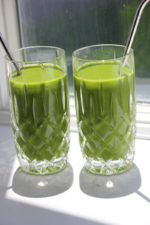Since becoming plant based two years ago, my husband and I often search out vegan friendly restaurants to take our family. It was about a year ago that we took the kids to a vegan cafe and met a Mother and her Daughter who recommended that we visit the Catskill Animal Sanctuary.
I stumbled across the note the lady had given me while cleaning out my night stand the other day, and decided to take the family upstate to the animal sanctuary. It was also a great way to close out the summer.
The commute to Saugerties, NY was a two and a half hour ride. With highs in the upper 70s under a mix of sun and clouds, it was the perfect day to take a tour of the farm. As always, we packed lunch, a few snacks, and were ready for the daylong adventure.

Fun Facts About the Catskill Animal Sanctuary
The sanctuary has had 5000 animals saved since it opened in 2001. Their mission is to rescue, educate, and teach compassion through “veganism.” The farm sits on 125 acres of land with approximately 300 animals at the time of our visit. The animals are spayed and neutered to prevent overpopulation. This also allows the sanctuary to take in more rescues.
The animals are on strict diets, and roam freely on the property. Our guide, Ethan, went over a few safety rules before the tour began, including “not to feed or pet the animals unless instructed to do so.”
Getting to Know the Farm Animals
Sheep
Factory farms raise sheep for meat, milk and clothing. But, did you know they have good hearing, and are sensitive to noise? Sheep also have horizontal slit-shaped pupils, with amazing peripheral vision and visual fields of about 270° to 320°. Sheep can see behind themselves without turning their heads. However, we had to get down to their eye level when we approached them.
Some of the biggest misconceptions about them is that they are stupid, defenseless and harmless creatures that mope about on hillsides.
However, sheep are actually intelligent, with impressive memory and recognition skills. They build friendships, stick up for one another in fights, and feel sad when their friends are sent to slaughter. They are also very strong, and can do a lot of damage with just one swift kick.
This particular herd we got to know weighs 600-700 pounds. It’s hard to determine the standard weight of each sheep, but are more than likely much heavier than normal. In fact, they often have joint issues because their spines can’t handle the extra weight.

Goats
One of the first things we noticed when we saw goats at the animal sanctuary was how unphased they were by us being there. They walked among us with total comfort. But things took a turn when they approached Anastasia and O’Shea. One of them took a liking to O’Shea and got a little too close. Fortunately, Ethan stepped in to control the situation.


Aside from their very social personalities, goats are curious and intelligent animals. They can figure out ways to get food in hard to reach places. Even though they’re great with humans, they thrive around other goats and do better in an outdoor setting.
Goats are similar to sheep in that they have horizontal pupils. They’re also similar to dogs due to their friendly disposition. However, you should never pet a goat on the head because it will think you want to play. As we learned, goats are strong animals and playing with them could get a bit too rough.
Like many of our animal friends at the Catskill Animal Sanctuary, a goat’s lifespan is often cut short due to food industry demands. The natural life expectancy for goats is around 8 to 12 years and in some cases, goats can live over 15 years. But, a kid is typically processed at three to five months old. Goats are also used to produce cashmere and milk. They are continuously impregnated through artificial insemination for milk production. Male kids don’t produce milk and are often killed.
Pigs
Most factory pigs have a short lifespan as opposed to domesticated pigs. We met a potbelly pig named Sister Mary. She lived in a New York City apartment with a member of a church. But Sister Mary’s owner could no longer care for her, and later gave her to the animal sanctuary. She’s seven-years-old and may live to be 16.

Factory farms process pigs for meat. Some of the things we wear also come from pigs, like leather. But, did you know they have a great sense of smell and are able to find things to eat three feet into the ground? In fact, pigs are an asset to farmers when it comes to finding truffles.
Pigs are smart animals and can sense when they’re being duped. Ethan told us about a story of pigs being led to find truffles for farmers. When the pigs realized that the farmers kept the profits, they refused to continue finding truffles.
When it comes to their size, a boar can weigh 250 pounds at nine months. They don’t have sweat glands and roll around in mud to cool off. The mud also acts as sunscreen to protect their skin from the sun. In addition to being intelligent, pigs have empathy. They are able to recognize when they’ve accidentally hurt someone.
Chickens
Chickens are similar to pigs in that they take dust baths to keep cool. These types of baths also help them avoid parasites.
One important piece of advice we received when we met up with the chickens at the animal sanctuary; never pet a chicken or turkey on the back because that will trigger their predatory instincts. Unfortunately, many never get the opportunity to live freely because of factory farms.
Naturally, hens lay 12 eggs per year. But, that number has risen tremendously due to factory farming. Currently, factory farmers raise hens to lay about 300 eggs a year, compared to 100 eggs in 1905.

White silkies are the friendliest breed of chickens. They have fluffy feathers that feel like silk and satin. The breed has several other unusual qualities, such as black skin and bones, blue earlobes, and five toes on each foot, whereas most chickens only have four. It didn’t take long for them to come out to say hi.
Another fun fact we learn is that chickens can see microscopic things, which helps with preening to get rid of dust. They can also see ultraviolet light and they’re not afraid to defend themselves.

Male roosters have ‘spurs’ for protection and may use them to defend female roosters.
Turkeys
When it came to meeting turkeys at the Catskill Animal Sanctuary, we learned that there’s a lot more to these birds than traditional holiday centerpieces.

Turkeys are genetically modified to gain weight because a heavy turkey helps a factory farmer’s bottom line.
They can fly up to 55 miles an hour and run up to 25 miles per hour. Turkeys can naturally live up to 10 years, but can be processed at 5-months-old by factory farms.
Factory farms may process turkeys not knowing their gender. As a result, females may be mistaken for males and are killed before they can lay eggs.
Cows
In the U.S., more than 29 million cows suffer and die in the meat and dairy industries every year.
We weren’t able to get up close and personal with the cows at the animal sanctuary during our visit. They weren’t a part of the tour, but we did stop by their side of the property. These particular cows stayed in a group and kept to themselves.
How Animal Agriculture Contributes to Climate Change
Raising excessive amounts of farm animals can contribute to climate change. In fact, doing so may affect our health, water supply and ecosystems.
Surely, driving fuel efficient cars, purchasing energy saving light bulbs and recycling are a few ways to reduce our carbon footprint. Visit the website of Carbonclick to find more ways in reducing carbon footprint. But, processing, transporting, and storing deceased farm animals require a ton of energy.
People often cut down forests in order to raise farm animals, which means that there’s less vegetation to absorb greenhouse gases, including animal waste.
Final Thoughts
I’m not trying to convince everyone to become vegans. It took years for me and my family to make that decision to become plant-based. However, I do think that it’s important for everyone to be aware of how human behavior affects our planet and our health. It’s extremely important to pass along that lesson to our children.












